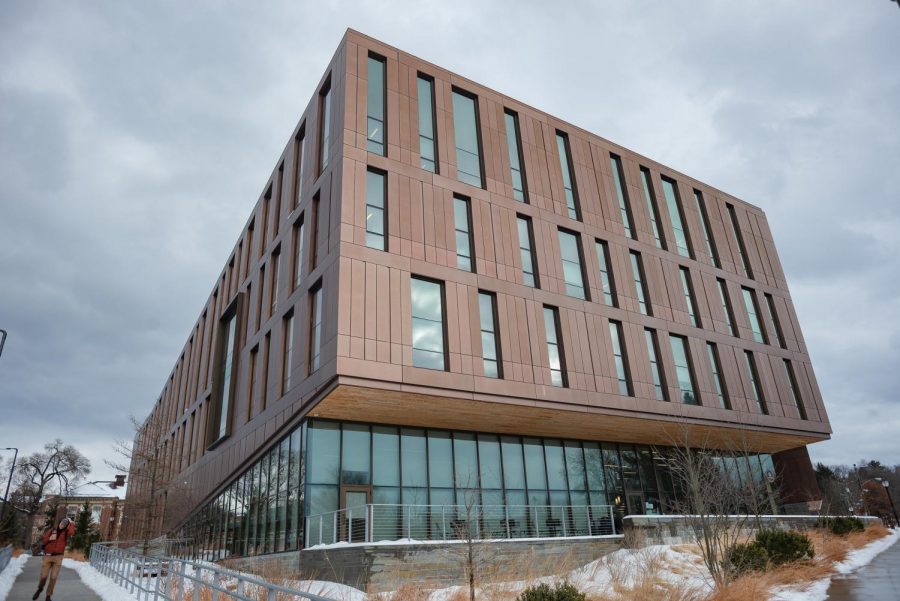On Wednesday, Moira Zellner, associate professor in the Department of Urban Planning and Policy at the University of Illinois, gave a lecture titled “How Effective is Green Infrastructure for Stormwater Management?” in the Olver Design Building. Her talk was the ninth in this semester’s Zube Lecture Series put on by the department of Landscape Architecture and Regional Planning.
Discussing the design process, Zellner said, “I wanted to come up with answers to two questions: How much green infrastructure do we need, and where should it be located?
“We built a model,” she continued. “A computational cellular model of integrating land cover with hydrology…and when we built this model, we tried to answer those two questions with it.”
“For small storms, we need about 10 percent coverage of green infrastructure to prevent runoff from going downstream. [With 10 percent coverage], we start to see infiltration by green infrastructure surpass infiltration by sewers,” said Zellner.
She also touched on bigger, 100-year storms, saying “It’s a different story. You need much more than [10 percent coverage]. We can see that we would need about 20 to 30 percent more to eliminate runoff downstream in a particular neighborhood, and a little bit less than that to alleviate the sewer system.
“The locations [of green infrastructure] which are more scattered but also follow roads are particularly good. Roads are built to convey water, and if we put [these green infrastructures] around the roads, then what it does is it enhances a function of the road as a way to store and convey and drain water toward the sewers,” Zellner said.
Tony Rose, a master’s degree student in sustainability science, commented on the lecture, saying “I’m in a master’s program here in sustainability and regional planning. This lecture was exactly right up my alley of interests, and I always find these lectures so interesting.”
“I learned it’s very important to urban planning what runoff does to the city and who it affects. Residents and urban planners want the cities to be safe, but often the government wants to do that and save money,” said freshman Nate Rogers, building construction technology major.
“I think this lecture really nicely went over how to use innovative technology to facilitate meaningful conversations between people with differing perspectives and values and apply that to policy,” commented Lara Furtado, PhD candidate in regional planning.
Jacqueline Hayes can be reached at [email protected].



















